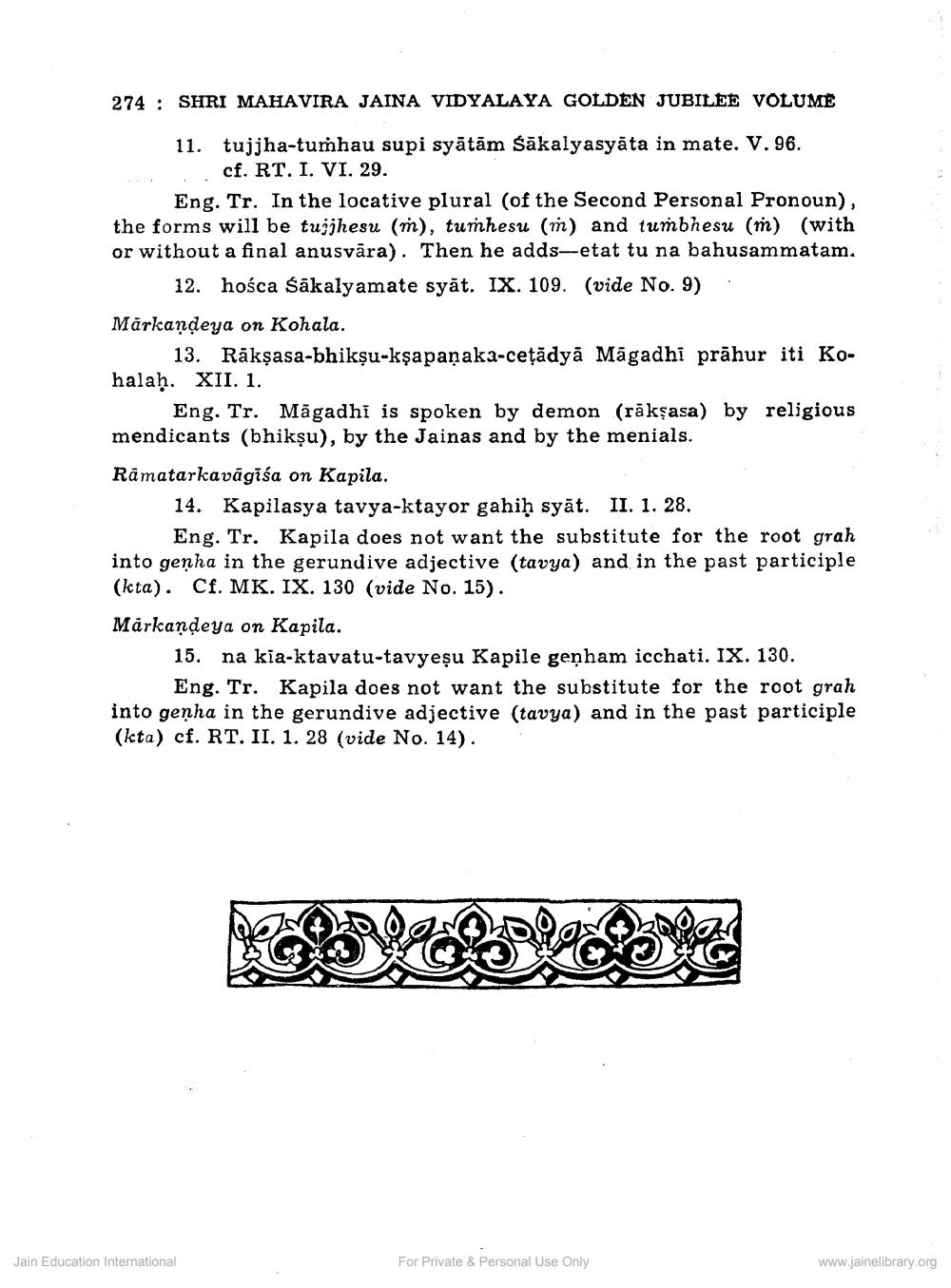Book Title: Fragments of the earliest Eastern Prakrit Grammarians Author(s): Satyaranjan Banerjee Publisher: Z_Mahavir_Jain_Vidyalay_Suvarna_Mahotsav_Granth_Part_1_012002.pdf and Mahavir_Jain_Vidyalay_Suvarna_ View full book textPage 5
________________ 274 : SHRI MAHAVIRA JAINA VIDYALAYA GOLDEN JUBILEE VOLUME 11. tujjha-tumhau supi syatam Sakalyasyata in mate. V.96. cf. RT. I. VI. 29. Eng. Tr. In the locative plural (of the Second Personal Pronoun), the forms will be tujihesu (m), tumhesu (m) and tumbhesu (m) (with or without a final anusvara). Then he adds--etat tu na bahusammatam. 12. hosca sakalyamate syat. IX. 109. (vide No. 9). Markandeya on Kohala. 13. Raksasa-bhiksu-ksapanaka-cetadya Magadhi prahur iti Kohalah. XII. 1. Eng. Tr. Magadhi is spoken by demon (raksasa) by religious mendicants (bhiksu), by the Jainas and by the menials. Ramatarkavagisa on Kapila. 14. Kapilasya tavya-ktayor gahih syat. II. 1. 28. Eng. Tr. Kapila does not want the substitute for the root grah into genha in the gerundive adjective (tavya) and in the past participle (kta). Cf. MK. IX. 130 (vide No. 15). Markandeya on Kapila. 15. na kia-ktavatu-tavyesu Kapile genham icchati. IX. 130. Eng. Tr. Kapila does not want the substitute for the root grah into genha in the gerundive adjective (tavya) and in the past participle (kta) cf. RT. II. 1. 28 (vide No. 14). Jain Education International For Private & Personal Use Only www.jainelibrary.orgPage Navigation
1 ... 3 4 5
